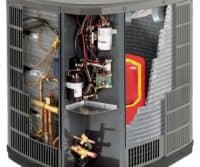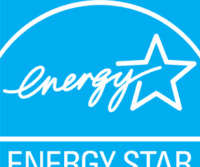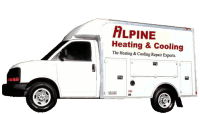
When it comes to managing home expenses, heating, ventilation, and air conditioning (HVAC) systems are significant contributors. Efficient HVAC systems not only ensure comfort but also help in reducing energy bills. For residents of Skagit County, Washington, there are several tax breaks and rebates available to make upgrading to energy-efficient HVAC systems more affordable.
Why Upgrade Your HVAC System?
Upgrading to an energy-efficient HVAC system has several benefits:
- Lower Energy Bills: Modern systems use less energy, translating into significant savings.
- Enhanced Comfort: Improved technology means better temperature regulation and air quality.
- Environmental Impact: Reduced energy consumption means a smaller carbon footprint.
- Increased Home Value: Energy-efficient homes are more attractive to potential buyers.
Five Federal HVAC Tax Credits
1. Energy-Efficient Home Improvement Credit
The federal government offers tax credits for homeowners who invest in energy-efficient improvements, including HVAC systems. As of 2024, you can claim up to 30% of the cost of a qualified HVAC installation, with a maximum credit limit set by the IRS. This credit covers the cost of the unit and installation.
How to Claim:
- Ensure the HVAC system meets the energy efficiency requirements set by the Energy Star program.
- Keep all receipts and manufacturer’s certification statements.
- File IRS Form 5695 when you do your taxes.
2. Residential Energy Efficient Property Credit
The federal government offers a tax credit for homeowners who install qualified energy-efficient property, including certain HVAC systems that use renewable energy sources. As of 2024, you can claim up to 26% of the cost of installing solar panels, solar water heaters, and other renewable energy HVAC systems.
How to Claim:
- Ensure the HVAC system meets the energy efficiency requirements set by the Energy Star program.
- Keep all receipts and manufacturer’s certification statements.
- File IRS Form 5695 when you do your taxes.
3. Nonbusiness Energy Property Credit
Homeowners can receive a tax credit for installing energy-efficient HVAC systems in their primary residences. This credit covers 10% of the cost of qualified energy-efficient improvements, including HVAC systems, up to a maximum of $500 for all years combined from 2006 to 2024.
How to Claim:
- Ensure the HVAC system meets the energy efficiency requirements set by the Energy Star program.
- Keep all receipts and manufacturer’s certification statements.
- File IRS Form 5695 when you do your taxes.
4. Geothermal Heat Pump Tax Credit
The federal government offers a tax credit for homeowners who install geothermal heat pumps. As of 2024, you can claim up to 26% of the cost of installing a geothermal heat pump, including labor costs for on-site preparation, assembly, and installation.
How to Claim:
- Ensure the geothermal heat pump meets the energy efficiency requirements set by the Energy Star program.
- Keep all receipts and manufacturer’s certification statements.
- File IRS Form 5695 when you do your taxes.
5. Small Wind Energy Property Credit
Homeowners can receive a tax credit for installing small wind energy systems, which can be used for heating or cooling purposes. As of 2024, you can claim up to 26% of the cost of installing a wind turbine system.
How to Claim:
- Ensure the wind energy system meets the energy efficiency requirements set by the Energy Star program.
- Keep all receipts and manufacturer’s certification statements.
- File IRS Form 5695 when you do your taxes.
Maximizing Savings with Puget Sound Energy Rebates for Heating

As the leaves turn golden and the air grows crisper in Skagit Valley, there’s nothing quite like the feeling of coziness that autumn brings. While you may be busy decorating your home, sipping on pumpkin spice lattes, and planning your next hayride in the Valley, it’s crucial not to forget about your HVAC system. As temperatures start to drop, ensuring your heating system is in top-notch condition with expert HVAC technicians becomes paramount.
Preparing for the Chill
Fall is the perfect time to give your HVAC system the attention it deserves. Our expert technicians are equipped to perform comprehensive maintenance checks, ensuring your system runs efficiently and effectively. From inspecting the ductwork to cleaning or replacing air filters, we leave no stone unturned.

Maximizing Energy Efficiency
As the days get shorter and the nights longer, your HVAC system will work overtime to keep you comfortable. Our professional services can help optimize your system’s energy efficiency, saving you money on your energy bills while reducing your environmental footprint.
Furnace Installation and Upgrades
If your existing furnace shows signs of wear and tear, it might be time for an upgrade. Our seasoned technicians can guide you through selecting a new, energy-efficient furnace that suits your comfort needs and budget.
Safety First
With the onset of cooler weather, ensuring that your heating system is safe to use is crucial. Our technicians are trained to detect and address potential safety hazards, such as gas leaks or faulty electrical connections, providing you with peace of mind.
Smart Thermostat Installation
Embrace the latest technology this fall by installing a smart thermostat. These innovative devices allow you to remotely control your home’s temperature, ensuring you return to a warm and inviting environment, even on the chilliest of evenings.
At Alpine Heating and Cooling, our expert HVAC team is dedicated to keeping your home cozy and comfortable throughout the fall season. Our experienced technicians are here to provide you with top-tier HVAC services, from routine maintenance to full system installations. Don’t wait until the cold weather sets in – schedule your appointment today with our expert HVAC team and let us help you make this fall your coziest yet!

As the leaves start to change and the air turns crisper, fall brings with it the promise of cozy evenings and warm beverages. It’s also the perfect time to consider upgrading your home’s heating system by installing a new heat pump.

Optimal Testing Conditions
Fall offers the ideal environment for testing and installing a new heat pump. The moderate temperatures provide a controlled setting for technicians to assess and fine-tune your system. This ensures that when winter arrives, your heat pump will be running at peak efficiency, providing consistent comfort without unexpected hiccups.
Energy Efficiency for All Seasons
Heat pumps aren’t just for heating; they also provide efficient cooling during warmer months. By installing a new heat pump in the fall, you’re preparing your home to handle the full spectrum of weather conditions. This dual functionality ensures that you get the most out of your investment year-round, ultimately leading to lower energy bills and reduced environmental impact.
Take Advantage of Off-Peak Seasons
Fall is traditionally considered an off-peak season for HVAC installations. This means you’re likely to find more flexible scheduling options and potentially even lower installation costs. By acting proactively in the fall, you can avoid the rush that often accompanies late winter or early spring installations.
Extend the Lifespan of Your System
Replacing your heat pump before it fails can save you from potential headaches in the middle of winter. Older systems tend to struggle as they age, resulting in uneven heating and cooling, higher energy bills, and costly repairs. Installing a new heat pump in the fall ensures you start the season with a reliable, well-functioning system, helping to extend its lifespan and reduce long-term maintenance costs.
Environmental Benefits
Heat pumps are renowned for their energy efficiency and low environmental impact. By upgrading to a new, high-efficiency model, you’re not only reducing your carbon footprint but also contributing to a more sustainable future. Additionally, many modern heat pumps use eco-friendly refrigerants that have a lower global warming potential, further enhancing their environmental credentials.
Access to the Latest Technology
The technology behind heat pumps is continually evolving. By installing a new system in the fall, you gain access to the latest advancements in efficiency, comfort, and smart-home integration. These features can enhance your overall living experience and ensure your home is equipped with the best tools to keep you comfortable.
Embracing the fall season by installing a new heat pump is a decision that brings numerous benefits to your home and your wallet. From optimal testing conditions to energy efficiency for all seasons, the advantages are clear. Don’t wait until winter is knocking at your door; take advantage of this opportune moment to upgrade your heating and cooling system. Invest in your comfort, your home’s efficiency, and a greener future today!

If your HVAC system is old (10 – 15 years) or not working, consider replacing your HVAC equipment with a high-efficiency unit that has earned the ENERGY STAR. It’s a good idea to do some research on options for a new heating or cooling system before your current one breaks, so you can make an informed decision if you need to act quickly.
How much energy you save will vary based on your use and climate, with colder regions saving more with ENERGY STAR heating equipment and hotter regions saving more with ENERGY STAR cooling equipment. Let’s take a look at different types of HVAC equipment to help you with your decision.
Furnaces
Furnaces are the most commonly used residential heating system in the United States. Running most often on gas, but sometimes on oil, propane, or electricity, furnaces deliver their heat through a duct system. Furnaces that have earned the ENERGY STAR have higher AFUE (Annual Fuel Utilization Efficiency) ratings. AFUE is the measure of heating equipment efficiency, represented as a percentage. Most furnaces that can qualify for the ENERGY STAR will be “condensing” furnaces where the transfer of heat is so thorough water or condensate is a byproduct of combustion. This condensing occurs with systems over 90 percent efficient. Another feature of efficient furnaces is a highly efficient blower motor (commonly an ECM, Electronically Commutated Motor, or another type of “advanced main air circulating fan”).
Boilers
A boiler heats your home by burning gas, propane, or oil to heat water or steam that circulates through radiators, baseboards, or radiant floor systems. Boilers do not use a duct system. Boilers that have earned the ENERGY STAR have higher AFUE ratings. Features that improve boiler efficiency include electronic ignition, which eliminates the need to have the pilot light burning all the time, and technologies that extract more heat from the same amount of fuel.
Central Air Conditioners
Most residential central air conditioners are called “split-systems” because they have an outdoor component with a condenser and compressor and an indoor component with an evaporator coil. It’s very important to replace both of these units at the same time. Installing a new outdoor unit without replacing the indoor unit is likely to result in low efficiency, and may lead to premature failure of the system.
ENERGY STAR qualified central air conditioners have higher SEER (Seasonal Energy Efficiency Ratio) and EER (Energy Efficiency Ratio) ratings than today’s standard models. SEER is the most commonly used measurement of efficiency for air conditioners. It measures how efficiently a cooling system will operate over an entire season. EER measures how efficiently a cooling system will operate when the outdoor temperature is at a specific level (95 degrees F).
The central air conditioner also needs a blower motor—which is usually part of the furnace—to blow the cool air through the duct system. The only way to ensure that your new air conditioner performs at its rated efficiency, is to replace your heating system at the same time. It’s especially recommended if your furnace is over 15 years old. If you purchase a new energy-efficient air conditioner but connect it to an older furnace and blower motor, your system will not perform to its rated efficiency.
Heat Pumps
Heat pumps provide both heating and cooling in one integrated system.
Electric Air-Source Heat Pumps (ASHPs). ASHPs, often used in moderate climates, use the difference between outdoor and indoor air temperatures to cool and heat. ENERGY STAR qualified ASHPs have higher SEER and EER ratings than conventional models. They also have a higher Heating and Seasonal Performance Factor (HSPF), which measures the heating efficiency of the heat pump.
Geothermal Heat Pumps (GHPs). GHPs are similar to air source heat pumps, but use the ground instead of outside air to provide heating, cooling, and often water heating. Because they use the earth’s natural heat, they are among the most efficient and comfortable heating and cooling technologies currently available. Although initially expensive, you can achieve significant cost savings on energy bills. GHPs are most often installed in new homes and require a duct system.

Consider Making a Change to Your HVAC System if Any of the Following Statements Apply
Some of your rooms are too hot or cold. Inadequate air sealing or insufficient insulation could be the cause. No matter how efficient your heating and cooling system is, if your home is not adequately sealed and insulated, you will not be as comfortable, and your system will have to work harder. Your home has humidity problems, excessive dust, or rooms that never seem to get comfortable. Leaky or poorly insulated ductwork might be the cause and reason to change your HVAC system.
Your equipment needs frequent repairs, and your energy bills are going up. In addition to the rise in energy costs, the age and condition of your heating and cooling equipment may have caused it to become less efficient. Call Alpine Heating & Cooling to take a look at your current system. Alpine can offer you solutions that work for your budget.
Your heating and cooling equipment is more than ten years old. Consider replacing it with newer, more efficient equipment. And remember, high-efficiency levels begin with ENERGY STAR.
You leave your thermostat set at one constant temperature. You could be missing a great energy-saving opportunity. You can set a programmable thermostat to adjust your home’s temperature at times when you’re regularly away or sleeping.
You used EPA’s ENERGY STAR Home Energy Yardstick to compare your household’s energy use to others across the country, and your score is below five. That means you’re using and paying for more energy at home than most Americans. Visit the ENERGY STAR Home Advisor to get recommendations for home improvement projects that will increase your score by improving your home’s energy efficiency and comfort.
With all of the severe watches and warnings this winter in Skagit County, you may need help fast with your HVAC system! The freezing temperatures are expected to stick around. Skagit County has seen 2-6 inches of snowfall overnight Sunday and the snow will not be melting for several days. If you are having issues with your heating system, we can provide fast service.
 Many people today may not be aware of the fact that a significant increase in a homeowner’s monthly electric bill could be directly related to a lack of adequate attic insulation. As a matter of fact, The Department of Energy recommends that homeowners increase attic insulation as one of the best ways to decrease electrical energy consumption. This makes sense simply because an abundance of insulation helps to keep heat inside your home and it avoids waste.
Many people today may not be aware of the fact that a significant increase in a homeowner’s monthly electric bill could be directly related to a lack of adequate attic insulation. As a matter of fact, The Department of Energy recommends that homeowners increase attic insulation as one of the best ways to decrease electrical energy consumption. This makes sense simply because an abundance of insulation helps to keep heat inside your home and it avoids waste.
Adequate Insulation
Simply stated, when there is sufficient attic insulation the end result is outstanding performance when it comes to preventing heat loss or transfer. When heat transfer is prevented, electric bills are lower. Even those who think they have adequate insulation may find that old insulation may not be working as it was intended. It is best to have a professional inspect your attic to determine whether or not the existing insulation is doing what it was intended to do.
Properly Installed In The Beginning
One thing that a professional technician will look at is whether or not the insulation was properly installed from the very beginning. A technician will also check for loose, broken or uneven sections of insulation as well as sections that have become settled over time. These are all conditions that can have a big impact on preventing the transfer of heat. In addition, there are circumstances where a contractor may not have used the right type of insulation with an approved R-value. Keep in mind that an R-value is the measurement of an installation’s ability to effectively prevent heat transfer.
Trusted Heating and Cooling Professional
The higher the R-value the better the insulation will be at stopping heat transfer. Regardless of what the reason is for insulation not performing the way that it should, it’s never too late to improve the insulation in your attic as a way to save money on energy. Those wishing to save up to 20% on electric bills can also do something as simple as seal insulation air leaks. Contact a trusted heating and cooling professional today to arrange an insulation inspection in order to save money over the long term. Contact Alpine Heating & Cooling today to learn more about Mount Vernon Washington heating and cooling services that get results.
 Today there are several different methods of heating a typical residential home in the United States. Here are a few simple examples of the most common ways that homes are currently being heated around the country. For example, a gas or oil furnace is typically used to heat a home by burning oil or gas contained within a sealed chamber. A blower moves air around externally to the chamber where ambient air then absorbs heat that is then ultimately pumped back into the home through ducting.
Today there are several different methods of heating a typical residential home in the United States. Here are a few simple examples of the most common ways that homes are currently being heated around the country. For example, a gas or oil furnace is typically used to heat a home by burning oil or gas contained within a sealed chamber. A blower moves air around externally to the chamber where ambient air then absorbs heat that is then ultimately pumped back into the home through ducting.
Make a System Safer and More Reliable
In most cases when a home is heated in this way, combustible gases that are toxic are vented outside of the home through pipes or tubing. While older furnaces will often use air from inside the home for heating, newer units sold today make use of outside air for the same purpose. Using outside air actually helps to increase efficiency and makes a system safer and more reliable. In addition to oil and gas furnaces, there is also the option to heat a home using an electric furnace. This type of system incorporates the use of simple electric strip heating elements. These elements serve to convert electricity into heat that is then used to warm a home.
Heating a Modern Residential Home
Air inside a home comes into contact with heating elements that serve to heat that air that is then distributed from room to room via ducting. This is considered one of the less efficient ways of heating a modern residential home. The system is simple, safe and reliable but generally is more expensive in terms of electricity usage. Finally, heat pumps are perhaps the most efficient way to heat a home using electricity. A heat pump will typically be of the air source type using some kind of refrigerant or chemical to effectively absorb latent heat in the air found outside of the home. This heat is then concentrated and then distributed throughout a home as a way to make the interior environment warm and livable.
Geothermal Style Heat Pump
Considered highly efficient in its operation a typical heat pump may not perform as well when the air outside becomes very cold. Unlike a normal air source heat pump, a geothermal style heat pump will derive its heat energy from the earth as a way to heat a home. This is a unique type of system that uses heat energy from the ground to produce very efficient heating. The benefit of using a geothermal system is that it is unaffected by outside air especially when this air becomes extremely cold. Contact Alpine Heating & Cooling today to learn more about Burlington Washington heating system maintenance and repair.


